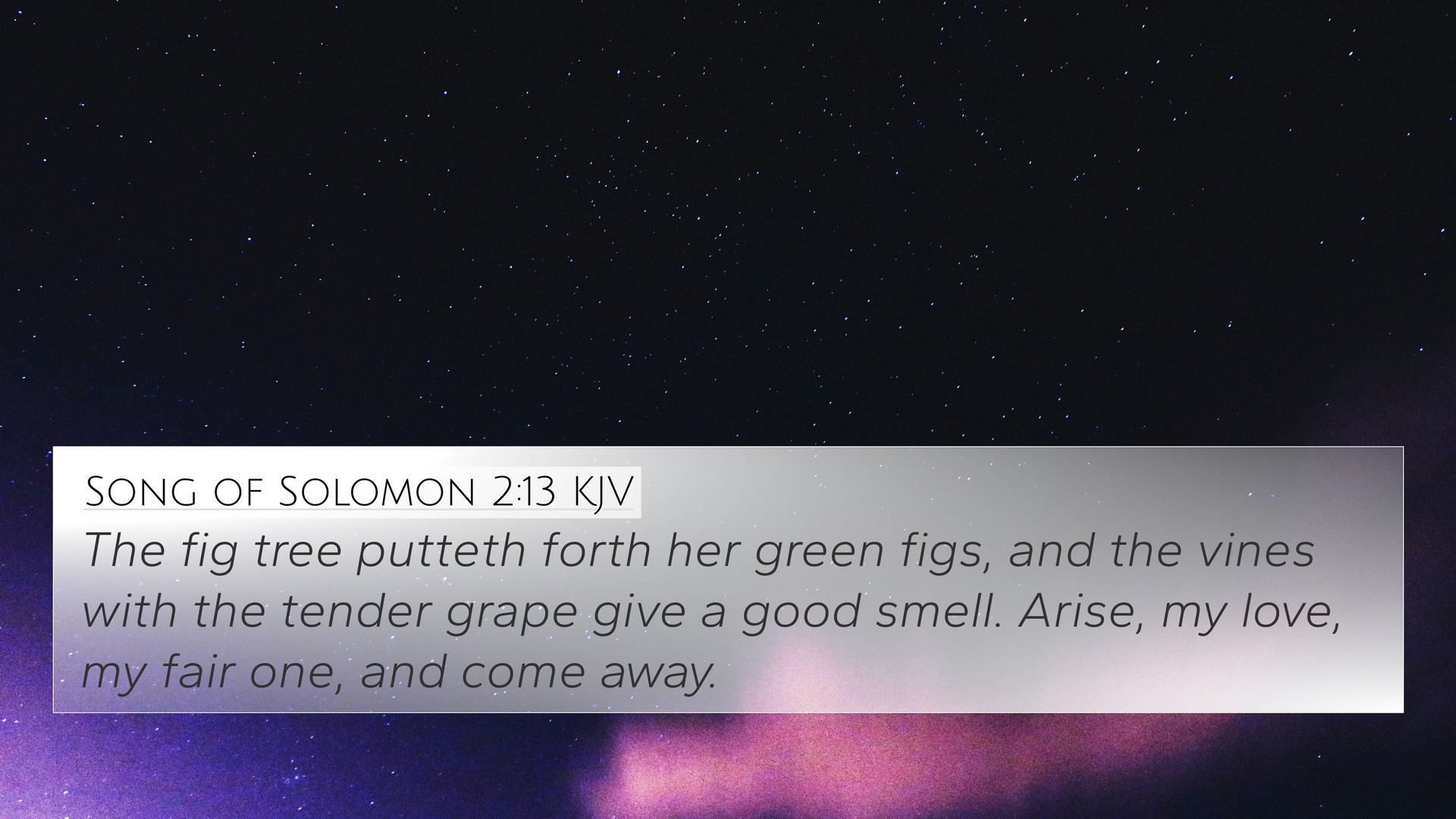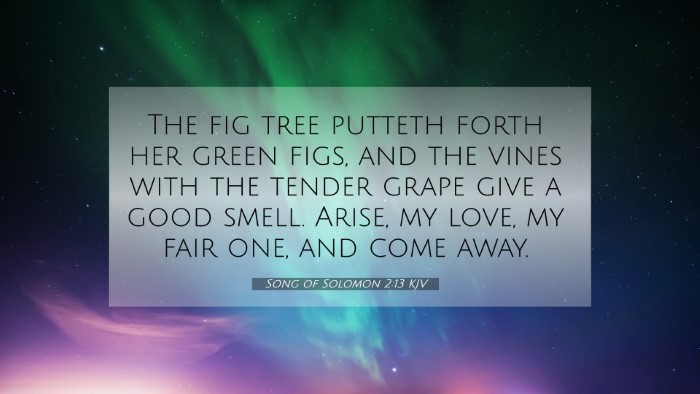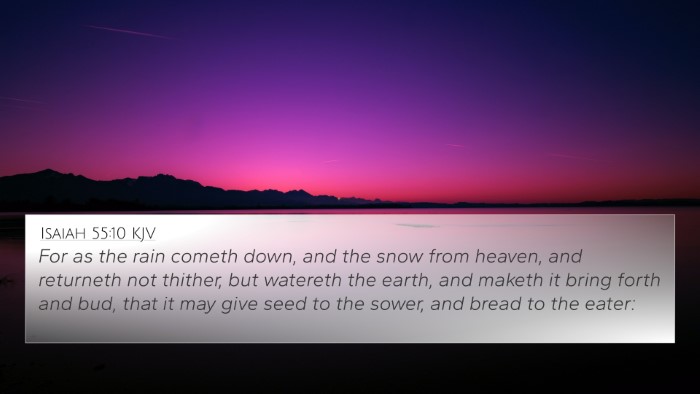Understanding Song of Solomon 2:13
The Song of Solomon, also known as the Song of Songs, is a unique book that celebrates love and romance within the context of a relationship. In Chapter 2, Verse 13, we find a vivid imagery that conveys deep meanings about love and longing. This verse reads:
"The fig tree puts forth her green figs, and the vines with the tender grapes give a good smell. Arise, my love, my fair one, and come away." (Song of Solomon 2:13, KJV)
Verse Interpretation
The verse signifies a call to enjoy the beauty and fruitful blessings of love. The imagery of the fig tree and grapevines symbolizes fertility, abundance, and the joys of love that come with the season of spring—often associated with new beginnings and hope.
Matthew Henry notes that the “fig tree puts forth her green figs” mirrors the refreshing nature of romantic love, portraying the season's promise that evokes sweetness and delight. The call to “arise” emphasizes the invitation to embrace love actively.
Albert Barnes explains that the mention of vines and figs indicates a bountiful harvest, demonstrating the richness in relationships. The attractiveness of nature parallels the beauty found in romantic devotion, urging individuals to respond to God's call for love and joy.
Adam Clarke elaborates on the dual symbolism of fruits being a metaphor for the intimate bonds of love and commitment. The fragrance of the tender grapes further highlights an inviting atmosphere that nurtures relationships.
Cross-References and Thematic Connections
Understanding Song of Solomon 2:13 relies on viewing it in context with other scriptural verses. Here are some notable cross-references:
- Genesis 49:10-12 - Here, the mention of grapes and blessings ties into the symbolism of abundance.
- Isaiah 5:1-7 - This passage speaks of the vineyard, reinforcing the themes of fruitfulness and God’s delight in His people.
- John 15:1-5 - Jesus, speaking about being the true vine, illustrates the importance of sustaining love and connection.
- Hosea 14:6 - It expresses restoration and fruitfulness, resonating with the imagery of blossoming vines.
- Proverbs 3:15 - Wisdom, often personified as a woman, is described as more precious than jewels, mirroring the affection shown in Song of Solomon.
- Matthew 7:17-20 - The idea that good trees bear good fruit relates to productive love relationships.
- Galatians 5:22-23 - The Fruit of the Spirit depicts traits that are essential to nurturing loving and fruitful relationships.
- Revelation 22:2 - The mention of the tree of life and its fruits encapsulates themes of eternal love and joy.
- Songs of Solomon 8:5 - Reiterates the journey of love and longing as well as the beauty of the call to come away.
- 1 Corinthians 13:4-7 - Discusses the nature of love itself, complementing the affectionate tones in Song of Solomon.
Thematic Bible Verse Connections
The themes found within Song of Solomon 2:13 relate to several broader concepts found throughout scripture, establishing a network of meaning that speaks to the experience of love:
- Love and Relationship: The deep connection between romantic love and divine affection.
- Fruitfulness and Abundance: The idea that love is fertile, leading to growth both personally and spiritually.
- Invitation to Intimacy: The consistent call to come closer, both in human and divine relationships.
- Joy and Beauty of Creation: Promoting the essence of life through appreciation of nature as a reflection of love.
Tools for Bible Cross-Referencing
To delve deeper into cross-referencing biblical texts, consider the following tools:
- Bible concordance
- Bible cross-reference guide
- Cross-reference Bible study materials
- Bible chain references
- Online Bible study platforms that offer comprehensive cross-reference materials
Using Bible Cross-References for Study
Exploring references among the biblical texts enriches the understanding of any particular verse, including Song of Solomon 2:13. Here’s how to effectively engage with them:
- Identify Themes: Find thematic links such as love and relationships.
- Connection Across Testaments: Look for parallels between the Old and New Testaments.
- Comparative Study: Analyze how similar concepts are addressed in different scripture passages.
- Sermon Preparation: Utilize cross-references to enhance sermon topics and biblical discussions.
Conclusion
Song of Solomon 2:13 invites readers to reflect on the beauty of love—it intertwines romantic longing with divine affection, lush imagery, and interpersonal connections. By exploring cross-references, individuals can enhance their understanding and appreciation of biblical themes and verses. Whether seeking insights on relationships or engaging in scriptural cross-referencing, the rich content and its implications in Song of Solomon stand as a testament to the enduring significance of love in the human experience.
















